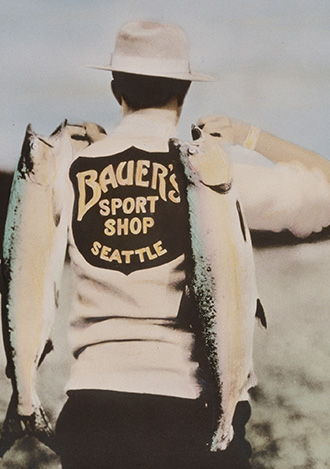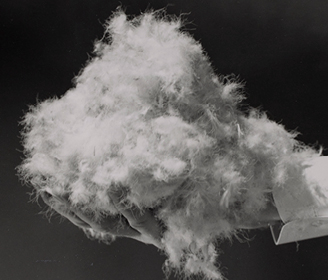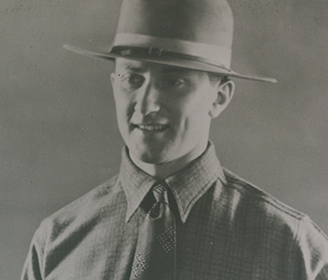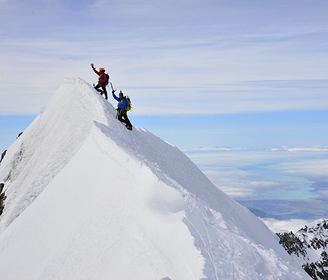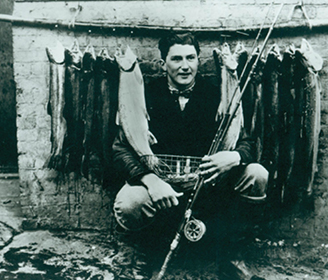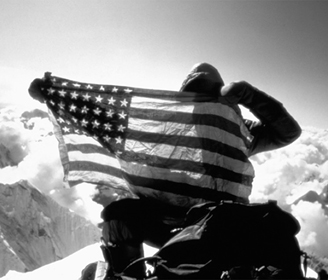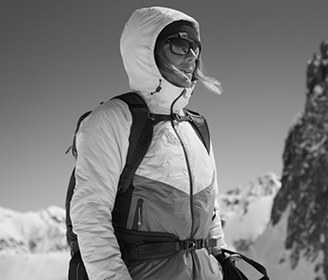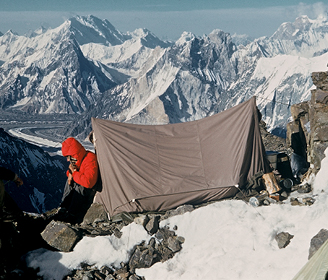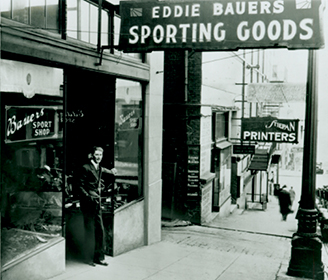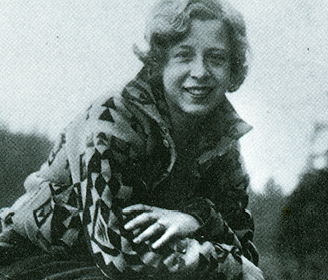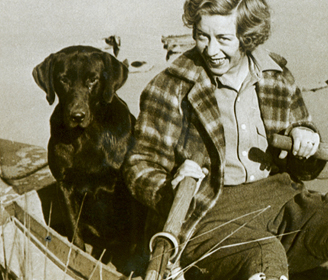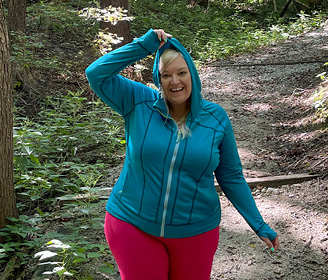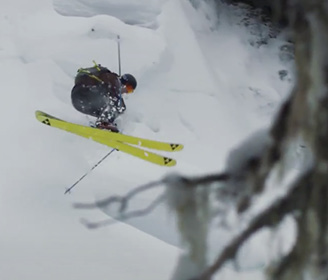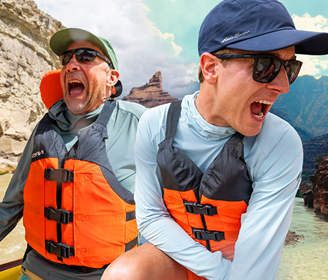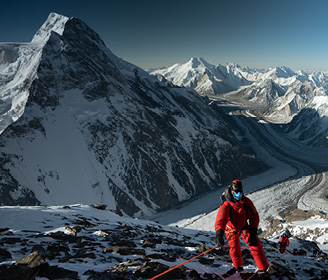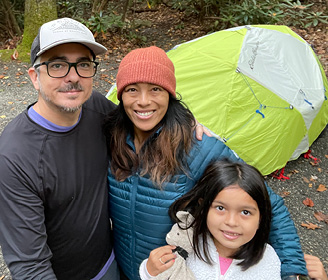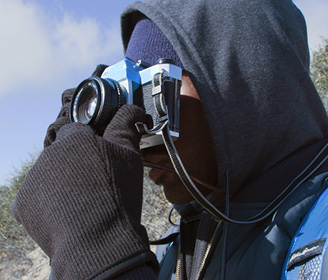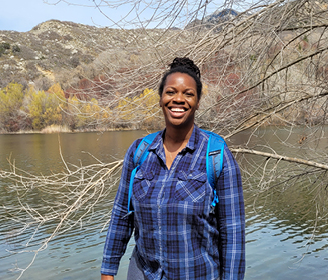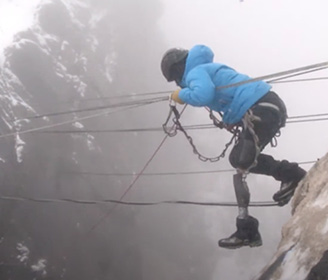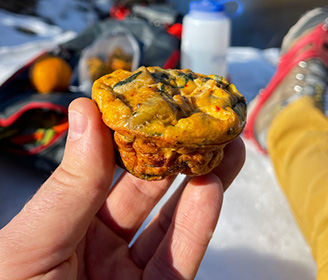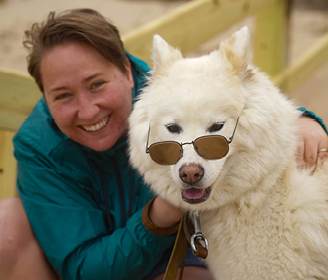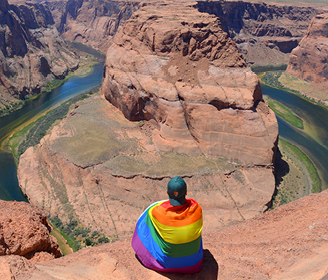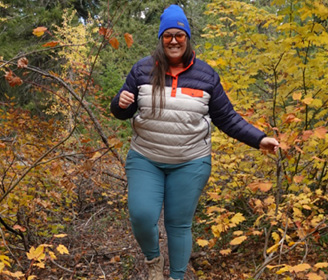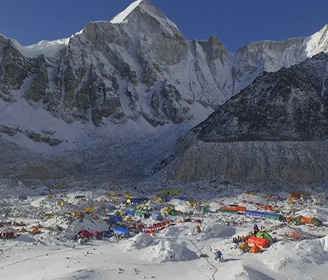What’s the difference between an expedition-tested down parka and a warm jacket? At 26,000 feet, it may be the difference between life and death.
From the start of his career as an outfitter, Eddie Bauer relied on his own experience as an expert guide to design equipment that would keep fellow outdoor adventurers safe and warm in hazardous conditions.
“There can be no compromise of quality when lives depend on performance,” Eddie was known to say.
In 1935, that maxim was put to the test when a winter fishing trip ended in a near-death experience from hypothermia. After reflecting on what went wrong, Eddie’s response was to invent America’s first down jacket, the Skyliner.
Eddie needed the right gear to unlock his adventure, so he created it. We continue this approach today.

In 2009, Eddie Bauer built on that legacy of adventure-driven innovation by launching a line of guide-built mountaineering equipment: First Ascent. In the true spirit of Eddie, the guides who helped design the equipment made the announcement on the top of Mt. Everest—outfitted from head-to-toe in First Ascent gear.
GONE FISHIN’
It was early September 1920 and Eddie Bauer’s Tennis Shop had only been open for seven months when a sign appeared on his workbench: “Eddie Bauer has gone hunting. Back February 1.”
What most new business owners would think unfathomable—closing up shop for five months to go hunting—Eddie considered essential. It was out in the wilderness, hunting and fishing, where he got his best ideas and tested and re-tested the gear that became essential for other hunters and fishermen.
It was also the perfect excuse to spend time outside.
EXPEDITION-TESTED, GUIDE-APPROVED
After the success of the Skyliner Jacket proved the value of down insulation, Eddie was approached to design a down mountaineering parka for climbers tackling the second highest peak in the world—K2. The resulting 1953 Kara Koram Parka was praised by expedition leader Charles Houston as “the finest article of cold-weather, high-altitude equipment I have ever seen.”
But Eddie didn’t rest on his laurels.
Five years later, leaders of another expedition to the Karakoram asked him to update the parka’s design. Always looking for any possible weight savings, the mountaineers suggested he try using ripstop nylon rather than cotton for the parka’s face fabric. The resulting jacket was both lighter and warmer than the first version.
In partial payment for receiving custom-built mountaineering equipment, the climbers Eddie Bauer outfitted agreed to give the company informal feedback based on the real-world performance of the product. This dialogue proved essential to the ongoing refinement of technical outerwear and equipment.
It was so effective that in 1978 Eddie Bauer contracted with a team of Arctic explorers with the express purpose of testing materials, products, and designs. Over a five-year period, expedition members were required to complete detailed product evaluations of everything from mittens and long johns to parkas and sleeping bags.
RETURNING TO THE ROOTS: FIRST ASCENT
Nearly 30 years later, Eddie Bauer again contracted with a team of mountain guides. This time, it went beyond giving feedback on existing product—the guides were asked to design a complete line of mountaineering equipment from the ground up. Their guiding principles were to make things simple, functional, light, and durable.
Over the next 18 months, between expeditions in Washington, Ecuador, Argentina, and the Himalaya, the guides came to Eddie Bauer’s Seattle headquarters to build everything they needed to climb the highest mountains in the world—from base layers to down suits, from backpacks to tents.
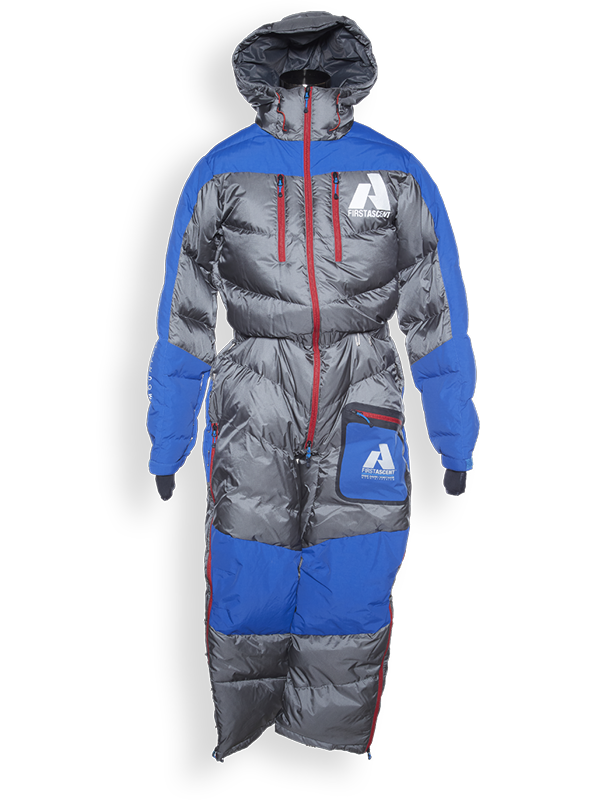
As the project gained momentum, the guides became involved in every aspect of design including features, fabrics, and color choices. In working to create gear for world-class climbers and novices alike, the team took a less-is-more approach. They analyzed what worked well, what could be better, and most importantly, what could be cut to simplify and save weight.
Throughout the process, the guide team reserved the right to veto any piece of gear that didn’t earn their trust. As one guide put it, “Our clothes are our life support.”
CONTINUING A LEGACY
In May 2009, after rounds of prototyping, going back-and-forth with designers, and testing equipment around the globe, the guide team returned to Everest Base Camp. On May 19, two First Ascent guides stood atop Mt. Everest, proving that their gear was up to the challenge.
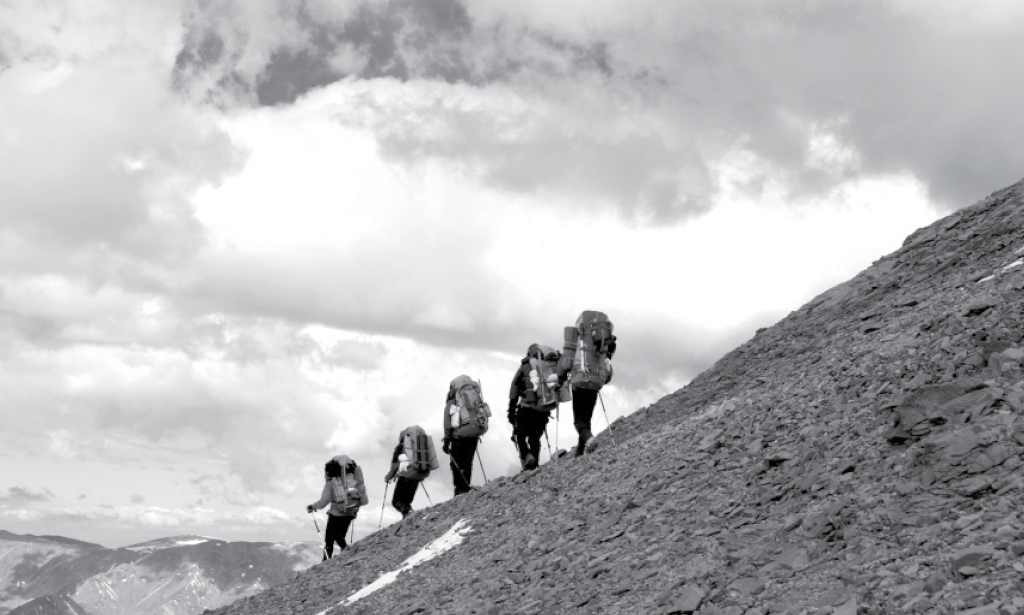
Today, First Ascent gear maintains the same high standards, and Eddie Bauer continues to be a leader in developing innovative outdoor products.
When Eddie left his shop to go hunting in 1920, he was confident that the experience would help him better serve the needs of other outdoor adventurers. Over a hundred years later, that spirit of adventure-driven innovation continues to guide Eddie Bauer and our mission to inspire, enable, and empower everyone to live their adventure.
Visit the Eddie Bauer Historical Archive
Learn more about the history of Eddie Bauer and read more stories like the one above.

